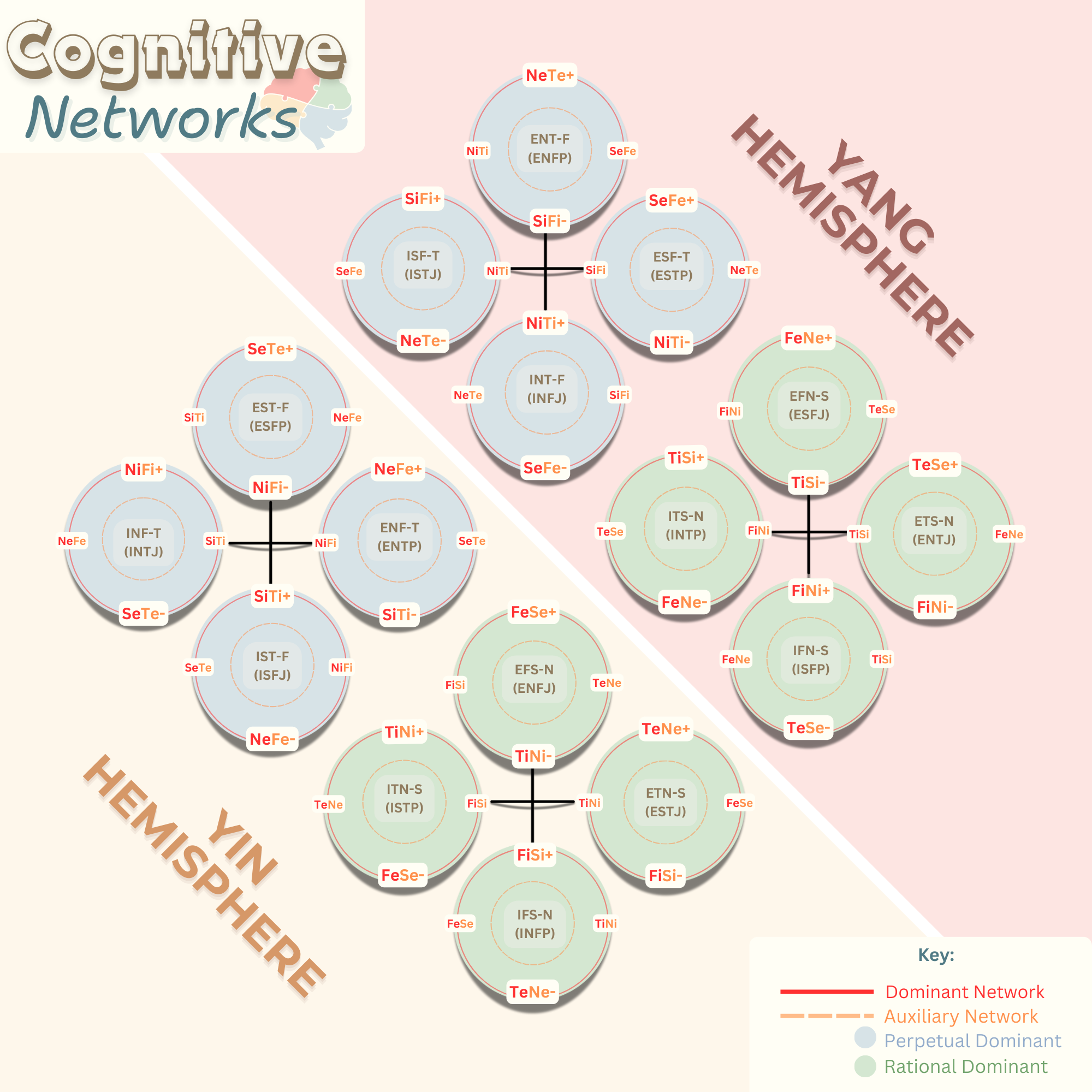
Network Theory is the natural evolution from the idea of Dip Functions. When we follow the cognitive continuums, we notice four distinct clusters emerge called Cognitive Networks. Just as the dip functions all work together dynamically, so do the networks.
Just like with the Cognitive Elements, networks also fall into a natural relationship with each other. Just like Cognitive Functions, a Rational network is complimented by a Perceptual element to form a Network Pairing.
But there is one more rule: In order for a process to be auxiliary, it needs to be doing something the core process is not. A core process like FeNe+ is within the FN/TS network (composites of Feeling-Intuition/Thinking-Sensing). This means the perceptual auxiliary must be within the NT/SF network (Intuition-Thinking/Sensing-Feeling) in order to fall into a natural auxiliary state.
Inevitably, these interactions form the Network Hemispheres, coined Yin and Yang for shorthand. However, CPT borrows these concepts from Ba Gua rather than Daoism. Within this significantly older system, Yang does not mean active, nor does Yin mean passive; Yang is not more solid and Yin is not more fluid. In general, the Yang hemisphere is more detached in their experience of reality whereas Yin types - even the Ti+ variants - are more immersed. Outside vs Inside is a good way to think about it.
These terms aren’t intended to be esoteric - they’re cultural shorthand for describing individual differences at the level of lived experience. While they may sound abstract, their origins lie in the observation of physical reality, not metaphysics. CPT uses them to evoke the felt sense of a process, without requiring the user to grasp the underlying mathematical structure that actually supports the model.
Each network has its own name also: Within the Yang hemisphere we have the Indigo and Amber Networks, while within the Yin hemisphere we have the Azure and Emerald networks. The colours represent the philosophical element each network aligns with: Indigo is Air, Amber is Fire, Azure is Water, and Emerald is Earth.
Many people - including myself - find it more useful to identify with their network than a specific type within it. Individual types carry stigma, whereas networks capture far more of our total cognition regardless of our specific origin point inside of it.
Perceptual Networks (Air/Water) processes are spacious and latent, whereas Rational Networks (Fire/Earth) are more motile. In cognitive terms, this just means a perceptual process is holding rationality constant as an auxiliary to be perceived upon (e.g., NeTe; Air), while the opposite process (i.e., TeNe; Earth) is locking-in perspective to evolve the rational product.